Recently I read an online teacher discussion centred around the question ‘how many teachers are using the SAMR model in regards to integrating technology in your practice?’ The comments and responses introduced me to a variety of ‘models/tools/processes’ I had not heard of before. Up until know, I’d only really known about SAMR, and a little about TPACK. Heres a whole heap of acronyms I just learnt a bit more about (read more about each below).
- TPACK
- SCAMPER
- RAT
- SAMMS
- SAMR
- SAMR coupled with Blooms
- SAMR framework with TPACK
- The Four Cs
- EDTECH QUINTET
When it comes to integrating technology, figuring out where to start and how to progress can be time consuming, confusing and convoluted. It really does need, I believe, a supportive whole school community approach (Read a bit more about my thoughts on this here). It took me a while to make sense of ‘IT’ enough to get here – a positive and realistic attitude towards integration. But, a positive attitude and willingness to ‘change’ alone wouldn’t ‘transform’ my teaching. It also wouldn’t tell me what tech I should integrate when, where and how. So, when ‘looking’ for ICT to integrate, I started to really focus my energy on answering two key questions:
- What ICT will help improve the teaching program or students learning?
- What ICT will help make my job easier, not harder?
For me (and as discussed previously here) keeping learning at the forefront is vital, and “sometimes good old-fashioned traditional tools are more effective than using a screen. If all you are doing is replacing with technology then is there really any point?” [8]
My two focus questions are actually rather huge and difficult to answer without breaking them down further. The ‘models/tools’ outlined below do actually end up answering these for me (eventually). I’m not here to suggest which model/tool is best – each have their pros and cons and each can be confusing and/or enlightening. I do believe having a model, tool or process (or list of questions) to follow or guide you can really help refine and clarify your options or actions. Fo me, the most important thing is ONGOING discussions (and aligned PL) in departments or teams. Teaching is demanding and moving very fast so we may as well do what we can to make it easier – and for me, that starts with ongoing conversations in a supportive team environment.
What framework or model do you or your school use?
>>>>>>>>>>>>>>>>>>>>>>>>>>>>>>>>>>>>>>>>>>>>>>>>>>>>>>>>>>>>>>>>>>>>>>
TPACK
The TPACK framework builds on Shulman’s idea of Pedagogical Content Knowledge. At the heart of the TPACK framework, is the complex interplay of three primary forms of knowledge:
- Content (CK) – the ‘what’ of teaching
- Pedagogy (PK) – the ‘how’ of teaching
- Technology (TK) – technology used for teaching
“…the model proposes that addressing content knowledge, pedagogical knowledge, and technology knowledge concurrently provides a framework for technology integration in the curriculum…. A teacher capable of negotiating these relationships represents a form of expertise different from, and (perhaps) broader than, the knowledge of a disciplinary expert (say a scientist or a musician or sociologist), a technology expert (a computer engineer) or an expert at teaching/pedagogy (an experienced educator)” [1].
“Expert teachers now are those who can bring together knowledge of subject matter, what is good for learning, and technology (ICT). The combination is described as Technological Pedagogical Content Knowledge (TPACK). The expertise embodied in the TPACK of a teacher is different from the knowledge of a discipline expert (say a scientist or a historian), a technologist (a computer scientist), or an expert on learning (a psychologist). Teaching mathematics to Year 5 learners requires different pedagogical uses of ICT than teaching history in secondary school or literacy in the early years. In each case, the expert teacher needs to make creative links between what is being learned (content), how it is taught (pedagogy), and the appropriate tools (technology).” [2]
SCAMPER
“The SCAMPER technique uses a set of directed questions which you answer about your problem/opportunity in order to come up with new ideas. The stimulus comes from forcing yourself to answer questions which you would not normally pose. The questions direct you to thinking about a problem/opportunity in ways which typically come up with new ideas.” [3]
The purpose is to ask yourself questions relating to each of the SCAMPER words to challenge your current way of thinking and help create new ideas. Read more here.
RAT
“The original purpose of the RAT framework was to introduce it as a self-assessment for preservice and inservice teachers to increase critical technological decision-making….The R.A.T. categories are not meant to connote a linear path to technology integration, such as teaching teachers to start with R activities, then move to A and ultimately T. Rather teachers will have an array of R, A, and T technology integration practices in their teaching.” [4]
Sean McHugh describes RAT a little further:
- R :: replacement | redundant | retrograde
- A :: augmented | average | acceptable
- T :: transformed | terrific | tremendous
He explains the ‘Transformation Category’ involves technology use that transforms the instructional method, the students’ learning processes, and/or the actual subject matter [8].
- The actual mental work is changed or expanded
- The number of variables involved in the mental processes are expanded
- The tool changes the organisation in which it had been used
- New players become involved with the tool’s use (or expanded use of the tool).
- New opportunities for different forms and types of learning through problem solving, unavailable in traditional approaches, are developed.
He also attempts to answer ‘the more important question’ of how do you move ICT use from one end to the other’ with the following (and I do really like his answer):
- Maybe you don’t need to, sometimes good old-fashioned traditional tools are more effective than using a screen.
- Maybe amplification (or augmentation/ modification in the SAMR model) is perfectly okay for the task at hand. Technology doesn’t have to transform learning for it to be beneficial, I have often found that if we let the kids have the freedom, they can transform learning all by themselves. They can take amplified practice and transform it due to their greater confidence, or more effective use of technology, more effective than was maybe conceived by the teacher…
- Focus on what it is about ICTs that make them unique via SAMMS Framework. A framework created by Sean himself after extensive reading in pursuit of his Masters degree. He noticed certain aspects of ICTs that were deemed to make a significant difference in teaching and learning. Those being:
- Situated practice (work anywhere, any place, space, or time)
- Accessibility (access to information)
- Multi-modality (screen centred creations)
- Mutability (provisionality/fluidity/malleability)
- Social networking (syncronous/asyncronous people power)
SAMR
“SAMR is a model designed to help educators infuse technology into teaching and learning. Popularized by Dr. Ruben Puentedura, the model supports and enables teachers to design, develop, and infuse digital learning experiences that utilize technology. The goal is to transform learning experiences so they result in higher levels of achievement for students.” [5]
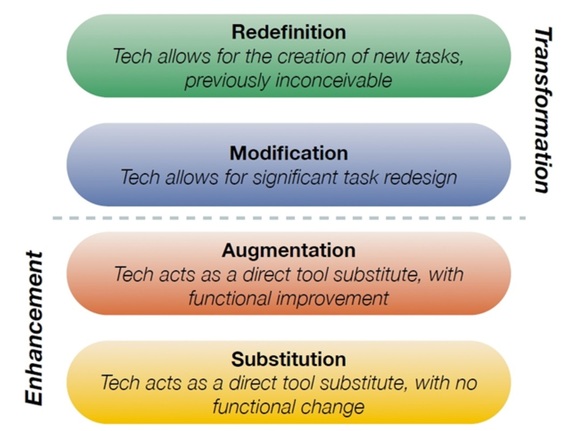
Image the creation of Dr. Ruben Puentedura, Ph.D. http://www.hippasus.com/rrpweblog/
I do really like Mr Hooker‘s swimming pool analogy of the SAMR model. “None of this (redefinition) was possible when you first stepped foot in that baby pool (Substituion), but without those initial steps you could have never gotten here. Without letting the kids have some level of autonomy with technology, they would have never gotten to the point where they felt they had some ownership in their learning. Just remember, now that they can jump off that high dive, it doesn’t mean this is where they always have to be. Some days the baby pool is all they can handle. Other days, maybe it’s the shallow end.”
I also like the idea of coupling the SAMR model and Bloom’s Taxonomy. Kathy Schrock believes “we should be planning for technology tasks, activities, and assessments that include both the higher levels of Bloom’s Revised Taxonomy and the transformation area of the SAMR model”
Read more about this ‘coupling’ of SAMR and Blooms here and here.
I also don’t mind the framework by Silvia Tolisano and Silvia Scarso that “brings together the SAMR framework with TPACK and allows teachers and technology coaches to visualize the interconnectedness of the models, making gaps more evident and point to “support opportunities” to move toward transformation.” [7] This framework involves:
- Taking an initial look at a lesson and identifying the ENTRY POINT of the SAMR stage (substitution, augmentation, modification, redefinition).
- Identifying the 4 FOCUS AREAS (goal, process, technology and communication).
- Using the subcategories within the FOCUS AREA to identify possible gaps and potential areas of upward MOVEMENT towards redefinition.
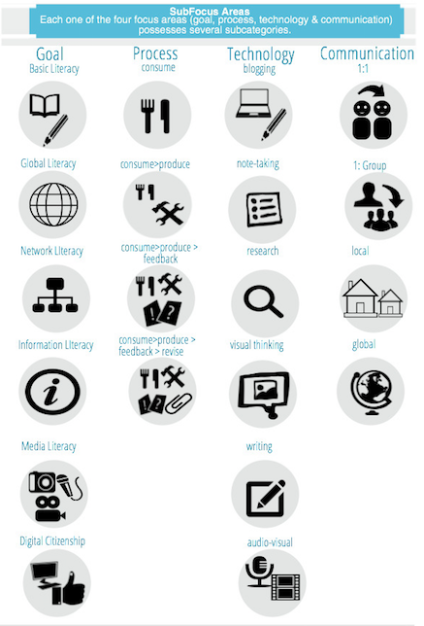
The Four Cs
I heard about this one on a PEGEEK podcast I listened to just this afternoon and I rather liked it. Probably because its created by a Phys Eder and I like the way Phys Eders think. Nathan Horne (founder of iphys-ed.com) uses the four Cs when giving consideration to what ICT to use (or not use). The key point he stresses is to first be clear on the outcome – if ICT helps him achieve one of the four Cs he’ll consider using it. He also makes note that different teachers will reach the same outcome in different ways, and, sometimes NOT using technology is the better way to go.
- Create – What can assist teachers or students create better content?
- Connect – What can help teachers or students connect with others?
- Celebrate – What can help teachers or students celebrate their progress and success?
- Collect – What can assist with the collection of work/evidence? (ie Google drive)
EdTech Quintet
Paul Lawley-Jones suggests we look at the fundamental activity domains first. “These domains are important because they state what teachers/students actually do. It is based around these activities that we should be designing tasks….. By focusing first on pedagogically sound activities in the different domains, and then asking what technology can we use to do those activities, we don’t have to think about whether the activity is a Redefinition, or whatever.” [6]
>>>>>>>>>>>>>>>>>>>>>>>>>>>>>>>>>>>>>>>>>>>>>>>>>>>>>>>>>>>>>>>>>>>>>>
REFERENCES
- 1 https://en.wikipedia.org
- 2 http://www.ttf.edu.au
- 3 http://www.brainstorming.co.uk
- 4 http://techedges.org/r-a-t-model/
- 5 http://www.schrockguide.net
- 6 http://paullawleyjones.com
- 7 http://langwitches.org
- 8 http://doverdlc.blogspot.com.au
- https://en.wikipedia.org/wiki/Lee_Shulman
- http://creatingminds.org/tools/scamper.htm
- http://doverdlc.blogspot.com.au/2013/06/the-rat-samr-transformative-technology.html
- https://www.graphite.org/blog/samr-and-blooms-taxonomy-assembling-the-puzzle
- http://www.schrockguide.net/samr.html
- http://doverdlc.blogspot.com.au/2013/10/a-framework-for-transformational.html
- https://thepegeek.com/podcast/
- http://www.iphys-ed.com/

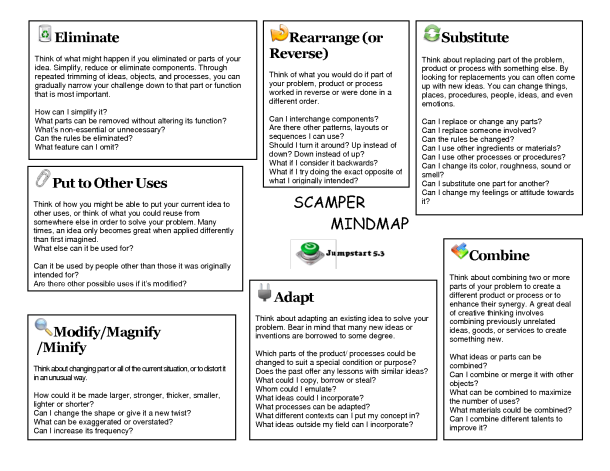
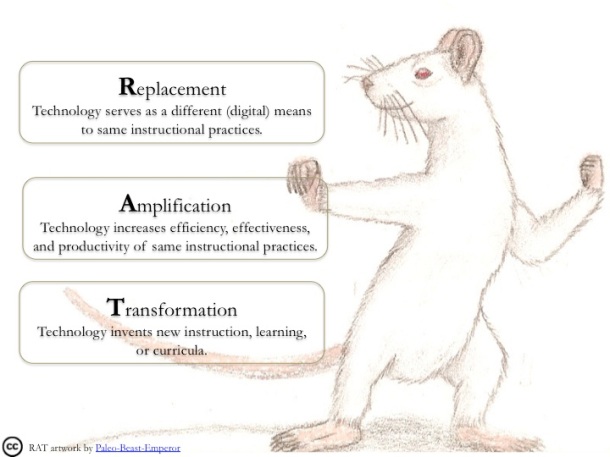
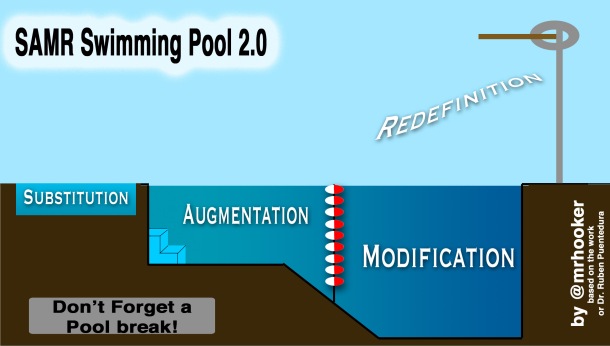
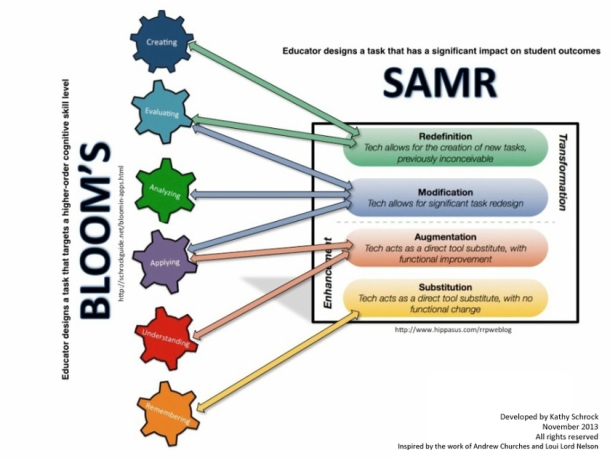
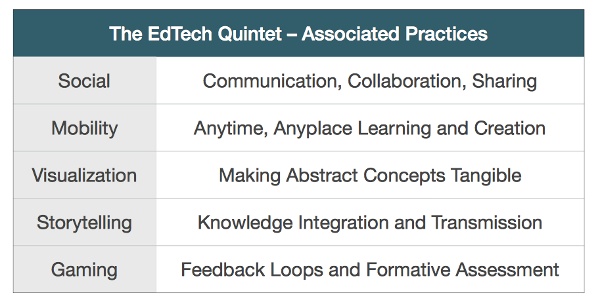
Pingback: The PE Playbook – June 2016 Edition – drowningintheshallow
Pingback: Tech integration in HPE: Linking, discussing, exploring, observing and brainstorming. | Aim High Jump Often